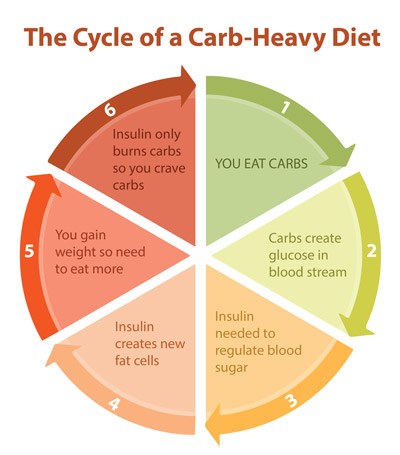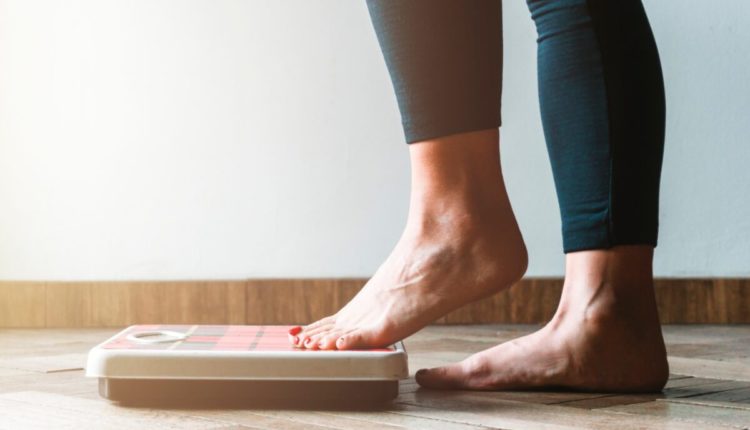What’s the best diet for healthy weight loss?
Pick up any diet book and it will claim to hold all the answers to successfully losing all the weight you want—and keeping it off. Some claim the key is to eat less and exercise more, others that low fat is the only way to go, while others prescribe cutting out carbs. So, what should you believe?
The truth is there is no “one size fits all” solution to permanent healthy weight loss. What works for one person may not work for you, since our bodies respond differently to different foods, depending on genetics and other health factors. To find the method of weight loss that’s right for you will likely take time and require patience, commitment, and some experimentation with different foods and diets.
While some people respond well to counting calories or similar restrictive methods, others respond better to having more freedom in planning their weight-loss programs. Being free to simply avoid fried foods or cut back on refined carbs can set them up for success. So, don’t get too discouraged if a diet that worked for somebody else doesn’t work for you. And don’t beat yourself up if a diet proves too restrictive for you to stick with. Ultimately, a diet is only right for you if it’s one you can stick with over time.
Remember: while there’s no easy fix to losing weight, there are plenty of steps you can take to develop a healthier relationship with food, curb emotional triggers to overeating, and achieve a healthy weight.
Four popular weight loss strategies
1. Cut calories
Some experts believe that successfully managing your weight comes down to a simple equation: If you eat fewer calories than you burn, you lose weight. Sounds easy, right? Then why is losing weight so hard?
- Weight loss isn’t a linear event over time. When you cut calories, you may drop weight for the first few weeks, for example, and then something changes. You eat the same number of calories but you lose less weight or no weight at all. That’s because when you lose weight you’re losing water and lean tissue as well as fat, your metabolism slows, and your body changes in other ways. So, in order to continue dropping weight each week, you need to continue cutting calories.
- A calorie isn’t always a calorie. Eating 100 calories of high fructose corn syrup, for example, can have a different effect on your body than eating 100 calories of broccoli. The trick for sustained weight loss is to ditch the foods that are packed with calories but don’t make you feel full (like candy) and replace them with foods that fill you up without being loaded with calories (like vegetables).
- Many of us don’t always eat simply to satisfy hunger. We also turn to food for comfort or to relieve stress—which can quickly derail any weight loss plan.
2. Cut carbs
A different way of viewing weight loss identifies the problem as not one of consuming too many calories, but rather the way the body accumulates fat after consuming carbohydrates—in particular the role of the hormone insulin. When you eat a meal, carbohydrates from the food enter your bloodstream as glucose. In order to keep your blood sugar levels in check, your body always burns off this glucose before it burns off fat from a meal.
If you eat a carbohydrate-rich meal (lots of pasta, rice, bread, or French fries, for example), your body releases insulin to help with the influx of all this glucose into your blood. As well as regulating blood sugar levels, insulin does two things: It prevents your fat cells from releasing fat for the body to burn as fuel (because its priority is to burn off the glucose) and it creates more fat cells for storing everything that your body can’t burn off. The result is that you gain weight and your body now requires more fuel to burn, so you eat more. Since insulin only burns carbohydrates, you crave carbs and so begins a vicious cycle of consuming carbs and gaining weight. To lose weight, the reasoning goes, you need to break this cycle by reducing carbs.

Most low-carb diets advocate replacing carbs with protein and fat, which could have some negative long-term effects on your health. If you do try a low-carb diet, you can reduce your risks and limit your intake of saturated and trans fats by choosing lean meats, fish and vegetarian sources of protein, low-fat dairy products, and eating plenty of leafy green and non-starchy vegetables.
3. Cut fat
It’s a mainstay of many diets: if you don’t want to get fat, don’t eat fat. Walk down any grocery store aisle and you’ll be bombarded with reduced-fat snacks, dairy, and packaged meals. But while our low-fat options have exploded, so have obesity rates. So, why haven’t low-fat diets worked for more of us?
- Not all fat is bad. Healthy or “good” fats can actually help to control your weight, as well as manage your moods and fight fatigue. Unsaturated fats found in avocados, nuts, seeds, soy milk, tofu, and fatty fish can help fill you up, while adding a little tasty olive oil to a plate of vegetables, for example, can make it easier to eat healthy food and improve the overall quality of your diet.
- We often make the wrong trade-offs. Many of us make the mistake of swapping fat for the empty calories of sugar and refined carbohydrates. Instead of eating whole-fat yoghurt, for example, we eat low- or no-fat versions that are packed with sugar to make up for the loss of taste. Or we swap our fatty breakfast bacon for a muffin or donut that causes rapid spikes in blood sugar.
4. Follow the Mediterranean diet
The Mediterranean diet emphasizes eating good fats and good carbs along with large quantities of fresh fruits and vegetables, nuts, fish, and olive oil—and only modest amounts of meat and cheese. The Mediterranean diet is more than just about food, though. Regular physical activity and sharing meals with others are also major components.
Whatever weight loss strategy you try, it’s important to stay motivated and avoid common dieting pitfalls, such as emotional eating.

Control emotional eating
We don’t always eat simply to satisfy hunger. All too often, we turn to food when we’re stressed or anxious, which can wreck any diet and pack on the pounds. Do you eat when you’re worried, bored, or lonely? Do you snack in front of the TV at the end of a stressful day? Recognizing your emotional eating triggers can make all the difference in your weight-loss efforts. If you eat when you’re:
Stressed – find healthier ways to calm yourself. Try yoga, meditation, or soaking in a hot bath.
Low on energy – find other mid-afternoon pick-me-ups. Try walking around the block, listening to energizing music, or taking a short nap.
Lonely or bored – reach out to others instead of reaching for the refrigerator. Call a friend who makes you laugh, take your dog for a walk, or go to the library, mall, or park—anywhere there’s people.
Stay motivated
Permanent weight loss requires making healthy changes to your lifestyle and food choices. To stay motivated:
Find a cheering section. Social support means a lot. Programs like Jenny Craig and Weight Watchers use group support to impact weight loss and lifelong healthy eating. Seek out support—whether in the form of family, friends, or a support group—to get the encouragement you need.
Slow and steady wins the race. Losing weight too fast can take a toll on your mind and body, making you feel sluggish, drained, and sick. Aim to lose one to two pounds a week so you’re losing fat rather than water and muscle.
Set goals to keep you motivated. Short-term goals, like wanting to fit into a bikini for the summer, usually don’t work as well as wanting to feel more confident or become healthier for your children’s sakes. When temptation strikes, focus on the benefits you’ll reap from being healthier.
Use tools to track your progress. Smartphone apps, fitness trackers, or simply keeping a journal can help you keep track of the food you eat, the calories you burn, and the weight you lose. Seeing the results in black and white can help you stay motivated.
Get plenty of sleep. Lack of sleep stimulates your appetite so you want more food than normal; at the same time, it stops you feeling satisfied, making you want to keep eating. Sleep deprivation can also affect your motivation, so aim for eight hours of quality sleep a night.
Fill up with fruit, veggies, and fiber
Even if you’re cutting calories, that doesn’t necessarily mean you have to eat less food. High-fiber foods such as fruit, vegetables, beans, and whole grains are higher in volume and take longer to digest, making them filling—and great for weight-loss.
It’s generally okay to eat as much fresh fruit and non-starchy vegetables as you want—you’ll feel full before you’ve overdone it on the calories.
Eat vegetables raw or steamed, not fried or breaded, and dress them with herbs and spices or a little olive oil for flavor.
Add fruit to low sugar cereal—blueberries, strawberries, sliced bananas. You’ll still enjoy lots of sweetness, but with fewer calories, less sugar, and more fiber.
Bulk out sandwiches by adding healthy veggie choices like lettuce, tomatoes, sprouts, cucumbers, and avocado.
Snack on carrots or celery with hummus instead of a high-calorie chips and dip.
Add more veggies to your favorite main courses to make your dish more substantial. Even pasta and stir-fries can be diet-friendly if you use less noodles and more vegetables.
Start your meal with salad or vegetable soup to help fill you up so you eat less of your entrée.

Get moving
The degree to which exercise aids weight loss is open to debate, but the benefits go way beyond burning calories. Exercise can increase your metabolism and improve your outlook—and it’s something you can benefit from right now. Go for a walk, stretch, move around and you’ll have more energy and motivation to tackle the other steps in your weight-loss program.
Lack time for a long workout? Three 10-minute spurts of exercise per day can be just as good as one 30-minute workout.
Remember: anything is better than nothing. Start off slowly with small amounts of physical activity each day. Then, as you start to lose weight and have more energy, you’ll find it easier to become more physically active.
Find exercise you enjoy. Try walking with a friend, dancing, hiking, cycling, playing Frisbee with a dog, enjoying a pickup game of basketball, or playing activity-based video games with your kids.
Keeping the weight off
You may have heard the widely quoted statistic that 95% of people who lose weight on a diet will regain it within a few years—or even months. While there isn’t much hard evidence to support that claim, it is true that many weight-loss plans fail in the long term. Often that’s simply because diets that are too restrictive are very hard to maintain over time. However, that doesn’t mean your weight loss attempts are doomed to failure. Far from it.
Since it was established in 1994, The National Weight Control Registry (NWCR) in the United States, has tracked over 10,000 individuals who have lost significant amounts of weight and kept it off for long periods of time. The study has found that participants who’ve been successful in maintaining their weight loss share some common strategies. Whatever diet you use to lose weight in the first place, adopting these habits may help you to keep it off:
- Stay physically active. Successful dieters in the NWCR study exercise for about 60 minutes, typically walking.
- Keep a food log. Recording what you eat every day helps to keep you accountable and motivated.
- Eat breakfast every day. Most commonly in the study, it’s cereal and fruit. Eating breakfast boosts metabolism and staves off hunger later in the day.
- Eat more fiber and less unhealthy fat than the typical American diet.
- Regularly check the scale. Weighing yourself weekly may help you to detect any small gains in weight, enabling you to promptly take corrective action before the problem escalates.
- Watch less television. Cutting back on the time spent sitting in front of a screen can be a key part of adopting a more active lifestyle and preventing weight gain.
- Advertisement -

